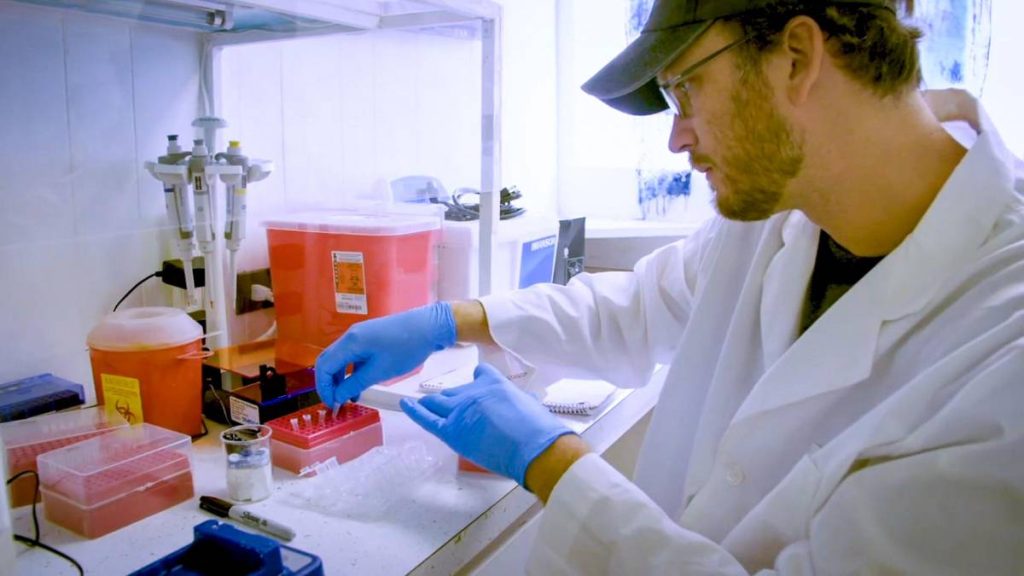UH Researchers Selected by NASA to Study Untouched Moon Samples
The University of Hawai‘i at Mānoa School of Ocean and Earth Science and Technology (SOEST), was one of nine teams selected by NASA, to continue the science legacy of the Apollo missions by studying pieces of the Moon that have been carefully stored and untouched for nearly 50 years. A total of $8 million has been awarded to the teams nationwide.
Jeff Gillis-Davis, Hope Ishii and John Bradley, scientists at the Hawai‘i Institute of Geophysics and Planetology (HIGP) in SOEST, are co-investigators and collaborators with the team led by the NASA Ames Research Center and Smart Systems Research Laboratory that will study how the space environment affects the Moon’s surface.
“By studying these precious lunar samples for the first time, a new generation of scientists will help advance our understanding of our lunar neighbor and prepare for the next era of exploration of the Moon and beyond,” said Thomas Zurbuchen, associate administrator for NASA’s Science Mission Directorate in Washington, D.C. “This exploration will bring with it new and unique samples into the best labs right here on Earth.”
“We are thrilled to have this very exciting opportunity to study lunar samples that have been so carefully preserved for nearly five decades with our modern, state-of-the-art instruments and techniques,” said Ishii. “This research will help to inform future lunar science and sample handling as NASA sets its sights on the Moon and then Mars.”
Fifty years ago, with great foresight, Apollo mission planners devised special sample containment systems that were designed to preserve fragile sample characteristics that could be contaminated and destroyed by interaction with the Earth’s atmosphere. Many of these “special” samples remain to this day sealed in their original Apollo containers for eventual study by future generations of space scientists.
The research teams will look at one of the three remaining lunar samples, from Apollo missions 15, 16 and 17, which have never been exposed to Earth’s atmosphere. The way these samples were collected and stored preserves the rocks exactly as they existed on the Moon.
The HIGP group will simulate the conditions of space to determine how exposure to the space environment affects these lunar samples and other simulated Moon rocks. Taking advantage of the state-of-the-art electron microscopes in the Advanced Electron Microscopy Center, they will also compare the carefully preserved lunar samples with those handled by standard procedures and to lunar simulants to explore whether oxidation has occurred on Earth and study chemical species that are especially sensitive to oxygen and water exposure.
“Returned samples are an investment in the future. These samples were deliberately saved so we can take advantage of today’s more advanced and sophisticated technology to answer questions we didn’t know we needed to ask,” said Lori Glaze, acting director of NASA’s Planetary Science Division in Washington, D.C.

















